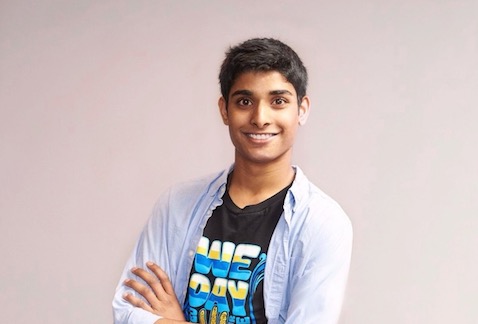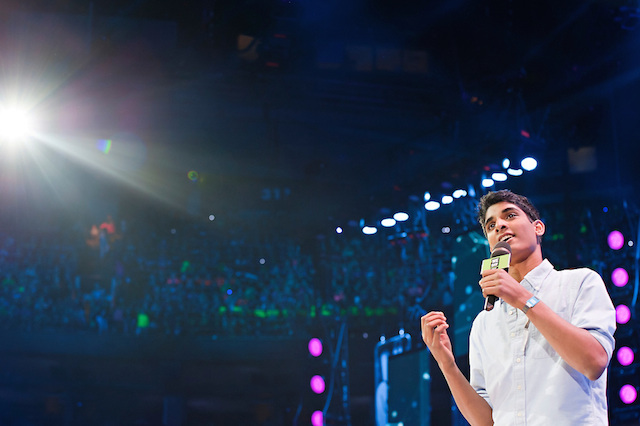Alex Deans has a lot to reflect on this summer. The eighteen-year-old Ontario, Canada native just graduated high school as valedictorian and is getting ready to attend McGill University in the fall.
He’s also changing the way blind people everywhere will be able navigate the world around them.
For the past six years, Deans has been working tirelessly on a device now known as the iAid, a navigation system that uses ultrasonic technology and GPS technology to help the visually impaired get where they need to go.
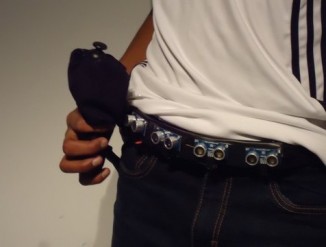 The belt-like structure comes with a joy stick and operates using four ultrasonic sensors, which send out sound waves that ricochet off objects and alert the user as to how far away that object is (currently, some cars use the technology to alert drivers as they back up).
The belt-like structure comes with a joy stick and operates using four ultrasonic sensors, which send out sound waves that ricochet off objects and alert the user as to how far away that object is (currently, some cars use the technology to alert drivers as they back up).
The idea first came to him at age 12, when he went to help a blind woman across the street. All that was at her disposal was a cane and the option of a guide dog, which is often hard to come by.
“When we use the navigation map on our iPhones, we know how to get where we’re going. We can see things directly in front of us and know where they are in relation to us,” Dean told Good News Network. “Guide Canes tell you what’s directly in front of you, but they don’t help you figure out where you are in relation your destination and objects that are farther away.”
The iAid helps users steer around objects in their vicinity and includes a joystick that swivels in their hands, pointing them in the direction they need to go in.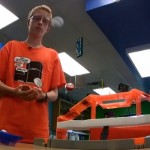
Boy’s Mind is Blown by Science Project Discovery, Doctors Share Genius Idea
“You can feel it moving in the direction you need to go in, and if you’re far away, it will tilt far away, and as you get closer, it becomes more vertical,” he said.
These sophisticated concepts derived from a modest knowledge gained as a boy watching a couple of TV shows about robotics and sound, and a penchant for breaking everything he could get his hands on just to see how things worked.
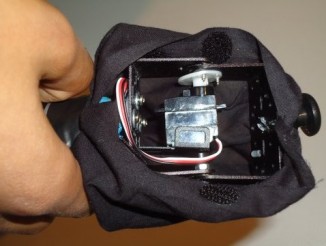 “At the beginning it was really a hobby. I didn’t think anything would come from it,” he said. “It took me 2-3 years just to get the programming and coding knowledge.”
“At the beginning it was really a hobby. I didn’t think anything would come from it,” he said. “It took me 2-3 years just to get the programming and coding knowledge.”
But once he had a prototype ready, he decided to bring it to the Canadian National Institute for the Blind.
“When I saw the reaction from people using the device, it motivated me to to continue doing it,” he said.
For years, Deans returned again and again, using their feedback to build an updated, better prototype until he got it right.
The iAid won the 2015 Weston Youth Innovation Award this past May, and he was presented with $2,000 at a ceremony at the Ontario Science Centre on June 2. There, he had the chance to demonstrate his device to local community organizations and school groups.
“It was really cool to be able to tell them about the history behind the device and my journey building it,” he said.
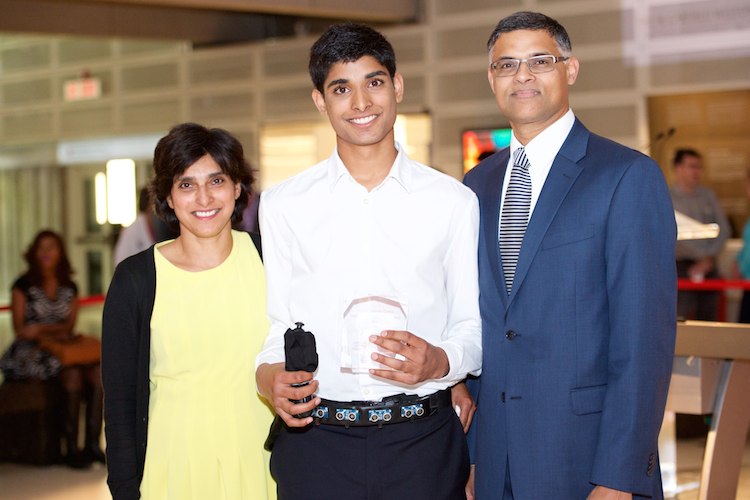
Now, he’s working with a multimedia team at the Science Centre to create an animated exhibit for his project, which should debut within the next two weeks. Deans also presented at We Day, a tour of inspirational, youth leadership concert-type events for youth across the U.S., Canada, and UK.
Better still, the patent he is vying for in both the U.S. and Canada should be finalized within the next month or two, bringing the device one step closer to the mass market.
“I want to make it smaller and aesthetically pleasing first,” he said. “I would also like to team up with the Foundation Fighting Blindness or another institution to distribute it.”
As far as pricing goes, he estimates the device will only cost about $50-$70 per unit, if he can get the cost of materials down.
He hopes his invention will one day replace canes and give blind people the ability to maneuver more easily on their own – an admirable goal from a guy who can not only see the world around him, but the future, as well.
Photo (top) by Karen Wray; (homepage) by Mike Kovaliv
Share This Inspiring Story With Your Friends:




















